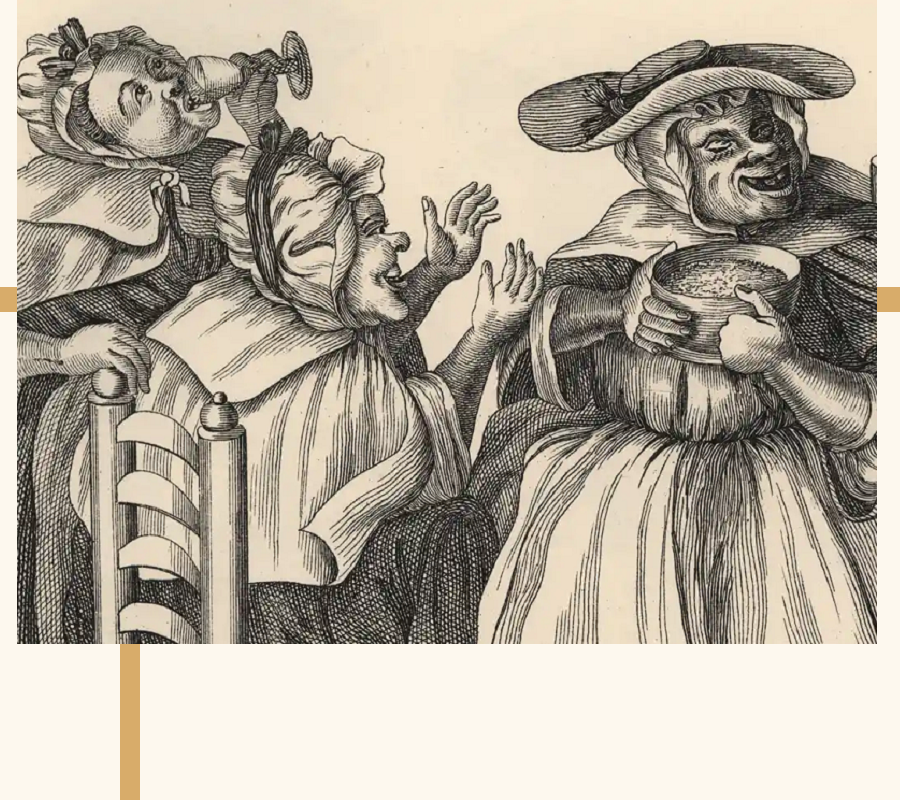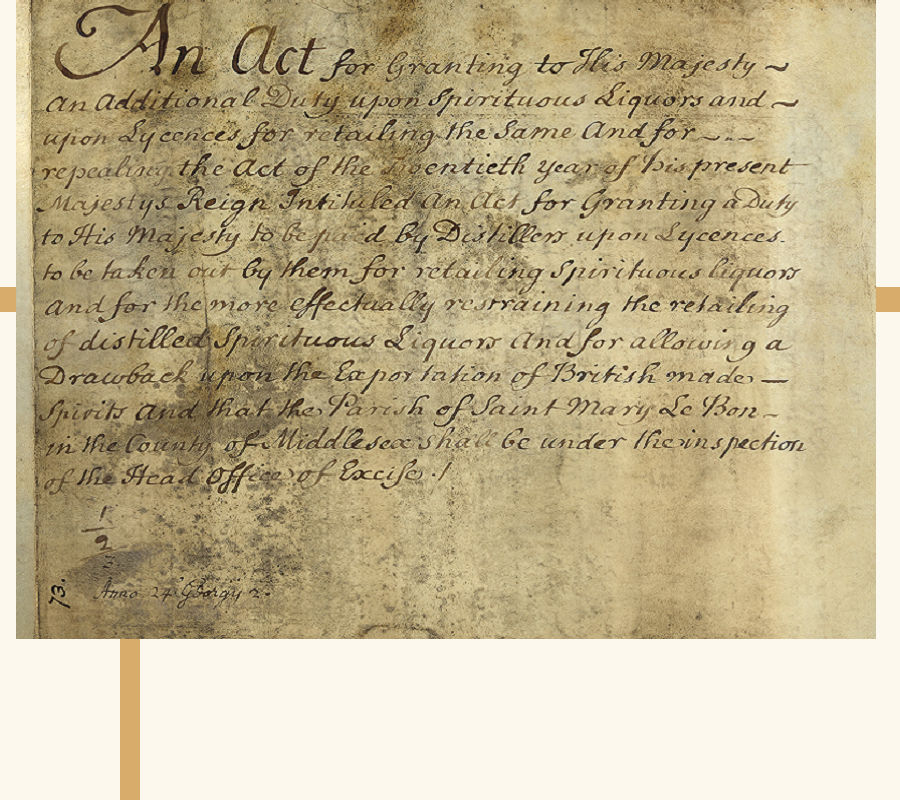OUR GIN HISTORY

The Eighth Century
The Origins of Distilling
The distillation of wine and 'properties of alcohol' has been around for centuries, originating in the Arab World as early as the eighth century it is said, before moving to Europe during the Middle Ages when Benedictine monks in Salerno, Italy would distill alcohol to disolve and preserve medicinal plants, including juniper which grew locally (and is still the source of many gin brand's juniper today!). The earliest written example of this is thought to be Compendium Salernitanum of the Schola Medica Salernita, from around 1055 - a collection of treatments that includes a recipe for a tonic wine infused with juniper berries.

1269
The First Juniper Drinks
The first major mention of juniper-based health-related drinks appeared in a Dutch encyclopaedic work Der Naturen Bloeme ('the flower of nature') by Jacob van Maerlant from 1269, which includes a chapter on medicinal herbs including juniper featuring a reference to a juniper-based tonic. Physicians through the ages have used juniper for medicinal purposes, particularly when it came to conditions of the stomach, kidneys and liver.

1582
The Introduction of Grain Spirits
While early distillation was done using fermented grapes (wine), in 1582 Distillers had found that producing spirit on a larger scale was easier and more cost effective when distilled from fermented grain (beer). this allowed farmers to preserve surplus grain and turn something that was once wasted into a new revenue stream. The first centres of grain spirit distillation were the coastal cities of the Netherlands, and later, after the Thirty Years War interrupted the supply of French cognac, demand for Dutch grain spirits exploded internationally, dominating the local economy.

1585
Dutch Courage
In 1585, English soldiers came into contact with 'genever' during the Thirty Years War, when they were sent to help the Protestant Dutch revolt against Philip of Spain. Before battle, the Dutch soldiers would have a nip of genever to steel them, and when the English troops returned home, they recounted tales of the spirit that had given them "Dutch courage".

1638 - 1639
The Worshipful Company of Distillers & The Distiller of London
In 1638, The Worshipful Company of Distillers was created by Theodore De Mayerne, 'The Father of English Distilling', and Thomas Cademan, physician to the Queen who established minimum quality and production standards, which they document in 'The Distiller of London', a pamphlet which banned the sale of 'low wines' and specified that spirits must be rectified.

1663
Distilleries in Amsterdam Alone Rise to 400
By 1663, numerous small Dutch and Flemish distillers (some 400 in Amsterdam alone) had popularised the redistillation of malt spirit with juniper and it was widely being used to treat medical problems, including kidney ailments, lumbago, stomach ailments, gallstones, and gout.

1689
Enter... William of Orange
On the 11th April 1689, the Dutch ruler, William III - better known as William of Orange - was crowned at Westminster Abbey in London as the new Kind of England, Scotland and Ireland - and this was what really drove the popularity of genever in England, turning it from a medicine into a fashionable drink. He was engaged in a conflict with France, and at the time, French brandy was the most popular spirit in Britain; in an attempt to weaken his enemy's economy, he started the English blockade against French goods, and as a result, the grain-based genever and soon gin which could be distilled in England, took the place of dwindling French brandy supplies, kick-starting an alcohol revolution: the drink of choice, once beer, was now gin.

1694
The Tonnage Act
Gin consumption and therefore production grew quickly, soon overtaking that of beer and ale, and cementing William of Orange as one of the most famous monarchs in history. But the further rise of gin was helped by yet another way - the War of the Grand Alliance (also known as the League of Augsburg). Like the previous war, it left the British government short of funds and in 1694 this led to the creation of the Bank of England and the Tonnage Act. This Act established the concept of national debt, enabling the Government to levy duties on ships according to their tonnage, and upon beer and other liquors. The taxing of beer dramatically increased its price to the extent that there was little difference in the price of beer and gin. This encouraged many to try the juniper flavoured spirit for the first time and many found they preferred it.

1714
First Recorded use of Gin
The first known written use of the word ‘gin’ appears in a 1714 work, ‘The Fable of the Bees, or Private Vices, Publick Benefits’ by Bernard Mandeville. He wrote, “The infamous liquor, the name of which deriv’d from Juniper-Berries in Dutch, is now, by frequent use. . . from a word of middling length shrunk into a Monosyllable, intoxicating Gin.” Although this is the first recorded use of the word it is of course likely to have been in colloquial use sometime earlier. Incidentally, the Dutch term ‘jenever’ or ‘genever’ was borrowed from Old French ‘genevre’ (modern French genièvre) meaning ‘juniper tree’, which in turn comes from the Latin word for the tree ‘juniperus’.

1717 - 1757
The Gin Craze & Mother's Ruin
The popularity and impact of gin on London's population, who were unused to imbibing anything stronger than beer, was prolific, and this period has since become known as the 'Gin Craze'. Likened to a modern day drugs epidemic, gin was a powerful drug that was cheaply and easily available.
By 1720, in London, a quarter of all houses were actively distilling gin and consumption had risen from 2.5 million to 8.2 million gallons. Street vendors peddled cheap gin from carts and back street compounders used lethal ingredients such as turpentine and sulphuric acid to flavour their product, and many gin shops set up rooms of straw out the back for men and women to spend the night unconscious on.

1729
The First Gin Act
The rising level of drunkenness among the poor and the shocking effects of poorly distilled gins in 1729 led Parliament to introduce the first of eight Gin Acts - the first of which was intended to restrict gin sales by increasing duty on its sale and raising retail licensing fees. The act however defined gin as a spirit to which "juniper berries, or other fruit, spices or ingredients” has been added, so while legitimate distillers were heavily penalised and limited, illicit distillers thrived.

1738
Captain Dudley Bradstreet & The Puss & Mew Machine
By 1738, England was on its fifth Gin Act, and a certain Captain Dudley Bradstreet researched the intricacies of the act, finding a loophole that said an informer must know the name of a person renting the property from which gin was illegally being sold, so Dudley promptly rented a house and placed a statue of a cat in the window, under its paw he hid a dispensing pipe. This quickly became known as a Puss & Mew House, as thirsty patrons would approach saying 'puss', and the vendor would reply 'mew', which would signal that those looking for gin could insert coins through a slot in the cat's mouth and in return were given gin through the pipe under the cat's paw, inadvertently inventing the World's first vending machine.

1750
Hogarth's Gin Lane
In 1750, English artist William Hogarth created two prints: Beer Street and Gin Lane. Designed to be viewed alongside each other, these works depict the evils of the consumption of gin in comparison to the merits of drinking beer. 'Gin Lane' depicted the negative impact of gin consumption; including the poverty & squalor of a town filled with thin, gaunt people, with the only businesses flourishing are pawnbrokers and undertakers. In stark contrast, on Beer Street the people are happy and plump, enjoying their ale, surrounded by prosperity and joy. These two prints are now thought to be works of propaganda, commissioned by the magistrate (and friend of Hogarth) Henry Fielding, who attributed the sharp increase in disorder, criminality and infant mortality blighting London to the impact of the spirit.

1751
The 8th and Final Gin Act
The end of the War of Austrian Succession lead to an influx of returning soldiers with no trade and no support, therefore seeing a growing crime wave. In 1751 a Westminster magistrate, Henry Fielding (remember him?), published a scare-mongering paper linking cheap gin with rising crime.
Inevitably, this anti-gin crusade lead to the eighth and final Gin Act, also known as the Tippling Act, doubling the price of a retail licence to £2, and specifically making that licence only available to inns, alehouses and taverns. The act also granted immunity from prosecution and a reward of £5 for any unlicensed retailer that informed upon a distiller supplying them. This combination proved lethal to back street gin sales, massively affecting the availability of the spirit and by 1752, the volume produced had fallen by over a third.

1831
The Invention of the Column Still
By the start of the 19th century, there was the desire to develop a Still that impreved the speed and quality of the distillation process, and in 1826, Robert Stein invented one consisting of two columns which made the distillation of neutral spirits practical and enabling the creation of the "London dry" gin. An Irishman and patent office cleric, Aeneas Coffey considerably improved the design and patented his ‘Coffey’ still in 1831. Column stills are also known as 'continuous stills' s unlike the batches required when distilling using the classic pot (or alembic) still, they can run continuously - meaning no time is lost to sopping and starting as well as producing a purer spirit on a larger scale.

1850
The Birth of the Gin and Tonic
In 1850, duties were removed on export gin, and London's distillers were quick to push their gin to new markets. Meanwhile, in British colonies, Tonic Water was being drunk for its anti-malarial properties, alongside large quantieis of this new quality style of dry gin - and so the gin and tonic was born, alongisde other popular gin drinks such as Pink Gin (gin and bitters), the British Soldier’s Delight (gin, soda and lemon) and Hatfield (gin and ginger beer).

2016
The Search Begins
Inspired by the revelation that gin was originally a Dutch discovery, Gin 1689 Founders, Alexander and Patrick were inspired to find the original 1689 recipe, a recreate the world's original gin. Following an 18 month quest, they finally discovered one the very earliest gin recipes in the rare books section of the British Library. However, they encountered one problem, the authors of the book – The Guild Company of Distiller – had encrypted the recipe to ensure that only its members could recreate it. Great news for gin-makers of 1689; bad news for Alexander & Patrick, more than three centuries years later.

2018
Launch of Gin 1689
Alexander and Patrick turned to one of The Netherlands’ oldest and most experienced distilleries, to help them recreate the gin from the 1689 ingredients list alone using their centuries of spirits knowledge. The result was Gin 1689 Dutch Dry. History repeating itself… in a really, really good way.

2019
The first ever Dutch Pink Gin launches!
A little further down the original recipe, you might notice a footnote: add strawberries and raspberries to the distillation to give a little flavour of fruit. Which in 2019, was exactly what Alexander and Patrick did, creating their Queen Mary Pink Gin... the original fruit-flavoured gin!



